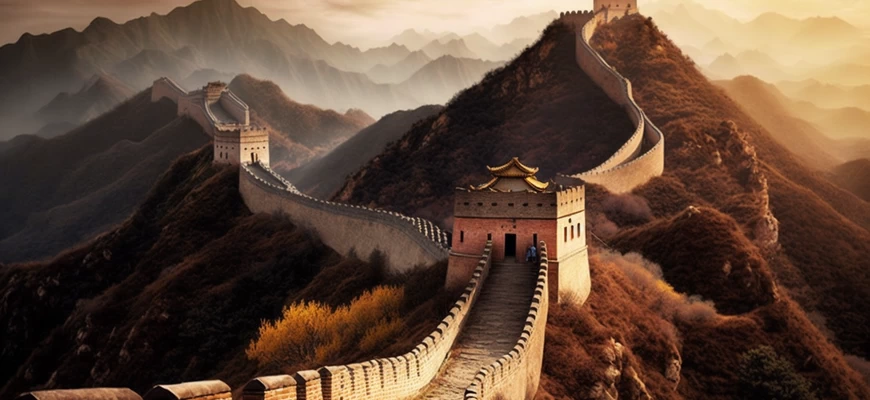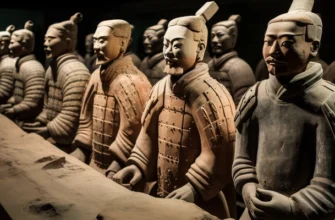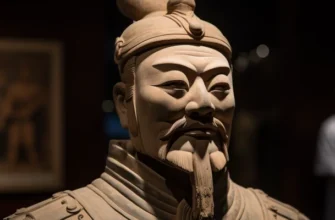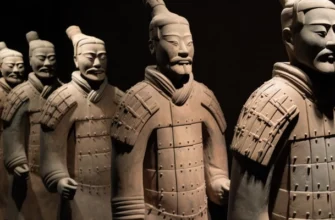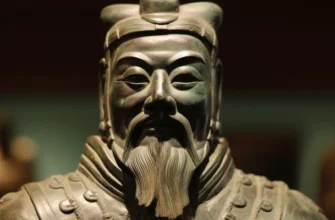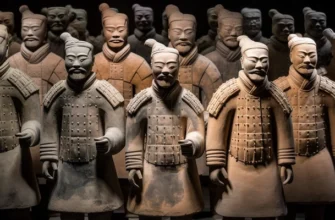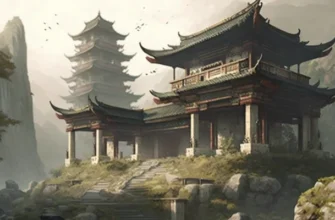The Great Wall is a symbol of China and one of the most impressive engineering marvels in the world. Construction of the wall began over 2000 years ago, and it is more than 20 thousand kilometers long. The main task of the wall was to protect China from attacks from the north, and it also served as a customs and border. Today, the wall is one of the main tourist attractions in China and the world.
- History of the construction of the Great Wall
- Ancient China and the reasons for building the wall
- First construction work and construction costs
- Gradual expansion and change of the wall’s route from dynasty to dynasty
- Functions and features of the wall
- China’s military defense and other functions of the wall
- Technical characteristics and structures that were included in the wall
- Current state and tourist potential of the wall
- Destruction and reconstruction of the wall in modern times
- Conclusions
History of the construction of the Great Wall
The history of the construction of the Great Wall is linked to the ancient history of China. Construction of the wall began more than 2000 years ago, during the Zhou Dynasty (1046-256 BC). Initially, the wall was built of lumps of clay and wood to protect against attacks from the north. However, over time, as the attacks intensified, the wall began to be built of stone and other durable materials.
In the period from 221 BC to 206 AD, a number of reforms were carried out in China, during which an attempt was made to unite the countries into a single empire. Emperor Qin Shi Huang (246-210 BC) began construction of the Great Wall, which was to become a large-scale facility to protect the country from enemy attacks. During the reign of Emperor Min Di (159-88 BC), the wall was expanded and covered with tiles, and during the Ming Dynasty (1368-1644), another significant expansion of the wall took place. In total, the wall was more than 20 thousand kilometers long and was of great military and economic importance to China.
Ancient China and the reasons for building the wall
Ancient China was dependent on attacks from the north, particularly from the barbarian tribes of Mongolia and Manchuria. These attacks provided grain, livestock, and other wealth to the northern provinces. This led to instability and a threat to national security. Therefore, one of the main reasons for building the Great Wall was to protect the state from attacks.
The wall also served as a customs and border, which allowed for the control of trade and the movement of people between regions. This contributed to the development of the economy and maintained stability in the country.
Over time, the wall became a symbol of national unity and pride in China. Today, the Great Wall is one of the main tourist attractions in China and the world, which testifies to its significant importance in human history.
First construction work and construction costs
The first construction work on the Great Wall began in the 7th century BC. However, the wall acquired its modern appearance during the Ming Dynasty, which ruled in the 14th-17th centuries. The construction of the wall took more than 2,000 years, and it was carried out in several stages and sections.
The cost of building the wall was enormous and, according to various sources, ranged from 1.5 to 2 million man-days. Many works were performed under the system of compulsory labor, when residents were forced to work on the construction of the wall for free. In addition, a huge amount of stone, bricks, and other building materials were used to construct the wall.
Gradual expansion and change of the wall’s route from dynasty to dynasty
Throughout its history, the Great Wall has been expanded and changed its route from dynasty to dynasty. During the Ming Dynasty, many new sections of the wall were added and the level of security at the border was increased. During the Ming Dynasty, the wall was further extended and reconstructed, and additional fortresses and towers were added. During the Qing Dynasty, additional sections of the wall were built to the west of the Chinese city of Lanzhou. Nowadays, the Great Wall consists of many sections that were built in different dynasties and with different materials.
Functions and features of the wall
The main function of the Great Wall was to protect China from attacks by hostile tribes from the north and northwest. The wall was also used to control the movement of goods and people across the border. The wall’s peculiarity is its size and durability; it is one of the largest structures on the planet and boasts more than two thousand years of historical and cultural significance. It is also worth noting that the Great Wall consists of various types and materials of construction, including stone, clay, wood, and brick, making it a unique historical structure.
China’s military defense and other functions of the wall
One of the main functions of the Great Wall was the military defense of China against attacks by enemy forces. The wall was also used as a way to control the movement of peoples across the border, and to preserve the cultural and historical heritage of the Chinese people. In addition, the Great Wall had an economic function, as parts of it were used as routes for the movement of goods and cargo. It was also important for communication and sending messages between different parts of China. In general, the Great Wall had a complex function of providing defense, preserving cultural heritage, controlling the movement of goods and people, and ensuring communications between different regions of China.
Technical characteristics and structures that were included in the wall
The technical characteristics of the Great Wall vary depending on its different sections. In the widest sections, the wall reaches a height of up to 8 meters, and in the narrowest sections, up to 5 meters. The width of the upper platform ranged from 3 to 5 meters. Various materials were used in the wall, such as clay, stones, wood, and brick. The wall had towers, fortresses, turrets, gates, and other defensive structures that protected the wall from enemy attacks. The wall also included various auxiliary structures such as water sources, bridges, and roads. The most famous structures that were included in the Great Wall are the Beidai Tower, the Juyuan Gate, and the Haze Wall.
Current state and tourist potential of the wall
Today, the Great Wall is one of the most popular tourist attractions in the world, attracting millions of tourists every year. Many parts of the wall have been restored and preserved and are now open to visitors. It is also possible to walk along the wall and enjoy panoramic views from the towers, visit museums and other tourist attractions. However, unfortunately, many sections of the wall remain in poor condition due to natural disasters and insufficient financial support for preservation. Therefore, developing the wall as a tourist attraction requires attention to cultural heritage preservation and responsible tourism.
Destruction and reconstruction of the wall in modern times
In modern times, many sections of the Great Wall are in a state of destruction due to natural disasters, wars, and poor management. However, the Chinese government has made significant efforts to reconstruct and preserve the wall as a cultural heritage. A commission has been set up to be responsible for the preservation and restoration of the wall, and the cost of this is millions of dollars annually. An action plan was also developed to improve the management of the wall and preserve it as a tourist attraction. Special zones have been created for tourists to explore and visit the wall in a comfortable way. Thus, the reconstruction and preservation of the Great Wall is an important task for China.
Conclusions
Based on the history and functions performed by the Great Wall, it can be argued that it was a key element of defense and order in ancient China. Today, although many different sections of the wall have been destroyed, others have been restored and included in the UNESCO World Heritage List. This has created great tourist potential, but also presented the authorities with the challenge of preserving and reconstructing this unique structure for future generations.
